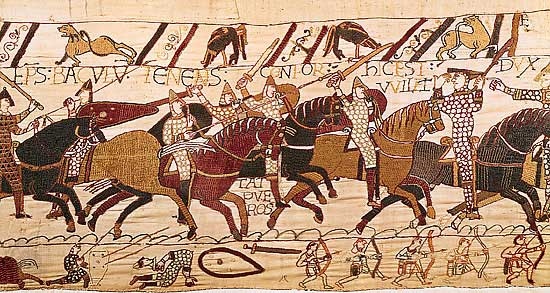 Some time back I tried to define rugs, carpets and tapestry (https://rugs4.com/what-is-a-tapestry-a-rug-a-carpet/). I did not find rugs and carpets too difficult to define, but when it came to ‘tapestry’ I was stumped by the term ‘reversible fabric.’
Some time back I tried to define rugs, carpets and tapestry (https://rugs4.com/what-is-a-tapestry-a-rug-a-carpet/). I did not find rugs and carpets too difficult to define, but when it came to ‘tapestry’ I was stumped by the term ‘reversible fabric.’
If a tapestry had to be reversible to be a tapestry then how could the Bayeux Tapestry be a tapestry as it was not reversible. I figured you could call it a rug if you wished but certainly you would never throw something that valuable on the floor and walk on it.
The answer, as it turned out, was simple. The Bayeux Tapestry is not a tapestry. It is an embroidery. Quoting from the Wiki article of the same name, The Bayeux Tapestry, “In common with other embroidered hangings of the early medieval period, this piece is conventionally referred to as a “tapestry”, although it is not a true tapestry in which the design is woven into the cloth; it is in fact an embroidery.”
The difference being that if the raised, ornamental designs were woven into the cloth they would appear the same on both sides…like a bath towel. But the designs on this famous …”tapestry” are not the same on both sides so it becomes an embroidery.
Why then call it the Bayeux Tapestry and not the Bayeux Embroidery? Quoting from a fine article I found in the West Kingdom Needleworkers Guild site( http://wkneedle.bayrose.org/Articles/bayeux.html )Nicole de Reyniès suggests a partial answer. In the 19th century, the word “tapestry” was used “to spare the work of any association with the degrading image of embroidery, which by the eighteenth century had been reduced to simple decoration for clothing.” Calling this hanging a “tapestry” became a tribute to its quality and value as a work of art. Makes sense…
Kindle Books, Some Free On The Bayeux Tapestry
Leave a Reply